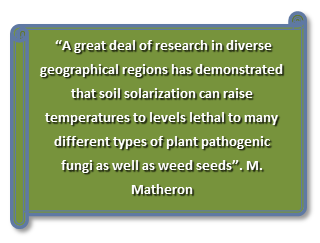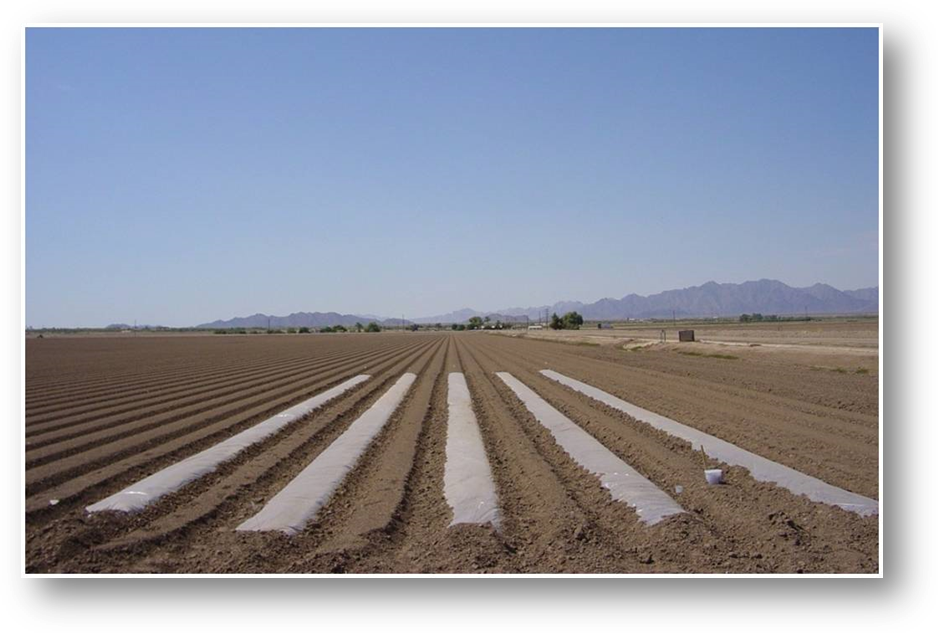
It is now officially summer and constant triple-digit daytime temperatures will
be the norm until at least the beginning of autumn in southwest Arizona. Although
we may not personally appreciate the summer heat, it is the perfect time for soil
solarization. Briefly, solarization of soil is accomplished by covering moist soil
with clear plastic, then allowing the sun’s energy to heat the soil over a period
of time. A great deal of research in diverse geographical regions has demonstrated
that soil solarization can raise temperatures to levels lethal to many different
types of plant pathogenic fungi as well as weed seeds. Soil is covered with plastic
to conserve soil moisture and retard heat loss. The combination of high temperature
and moisture is essential for killing plant pathogens and weed seeds in soil. The
use of drip irrigation if available can help maintain soil moisture and optimize
the soil solarization treatment. In preformed bed solarization trials without supplemental
drip irrigation conducted a few years ago in Yuma County, the average temperature
of soil was 113°F at a depth of 2 inches during a 1-month summer solarization period,
compared to 102°F for nonsolarized soil. The average peak afternoon temperature
in solarized soil during these trials was 128°F. In these yearly solarization trials,
conducted in soil naturally infested with the lettuce Fusarium wilt pathogen, disease
incidence in a subsequent planting of lettuce was reduced from 42 to 91%, depending
on the trial, compared to disease levels in adjacent nonsolarized plots. Soil solarization,
like any other cultural practice, has its benefits as well as drawbacks. Documented
benefits include significant population reductions of different soil-borne plant
pathogens as well as numbers of viable weed seeds. Drawbacks include the cost of
buying, laying, maintaining, and removing the plastic film.

Solarization
Click picture to listen to Mike's update





